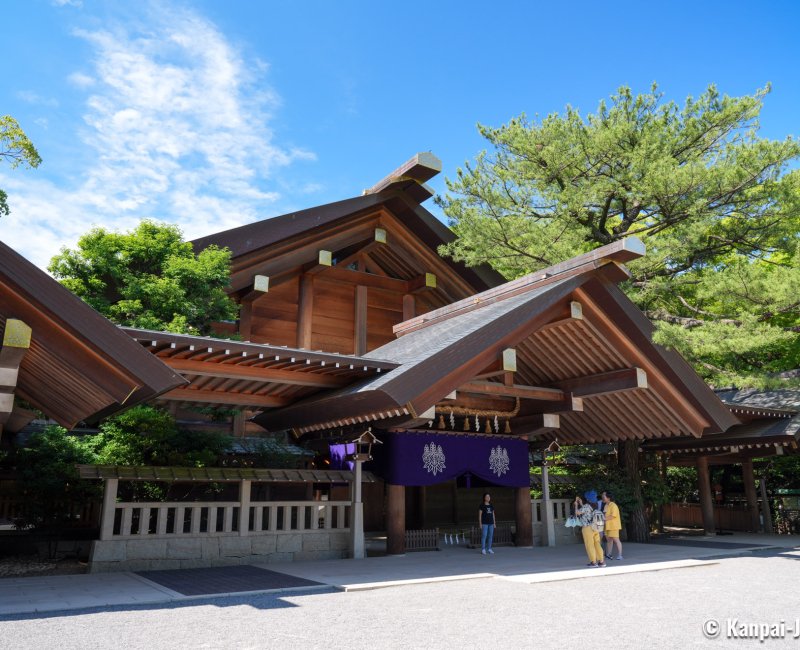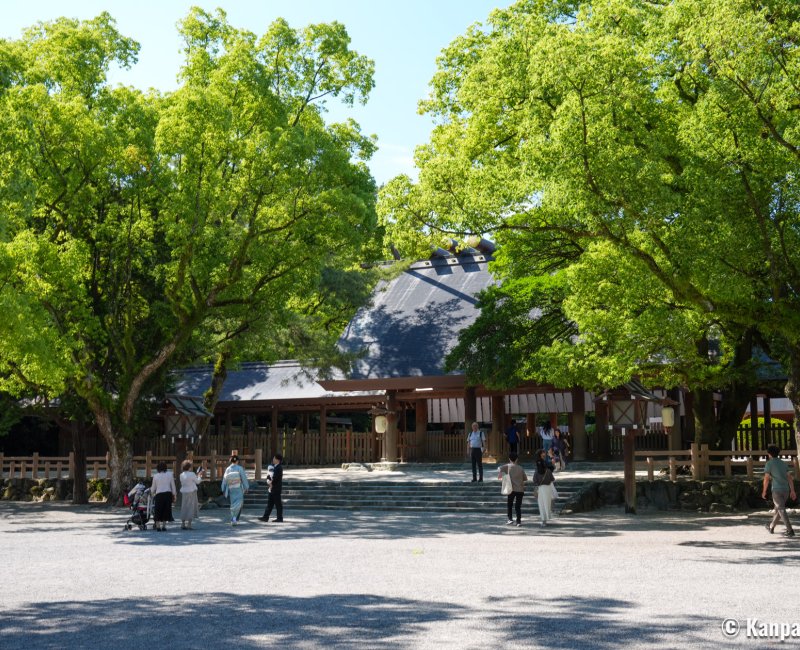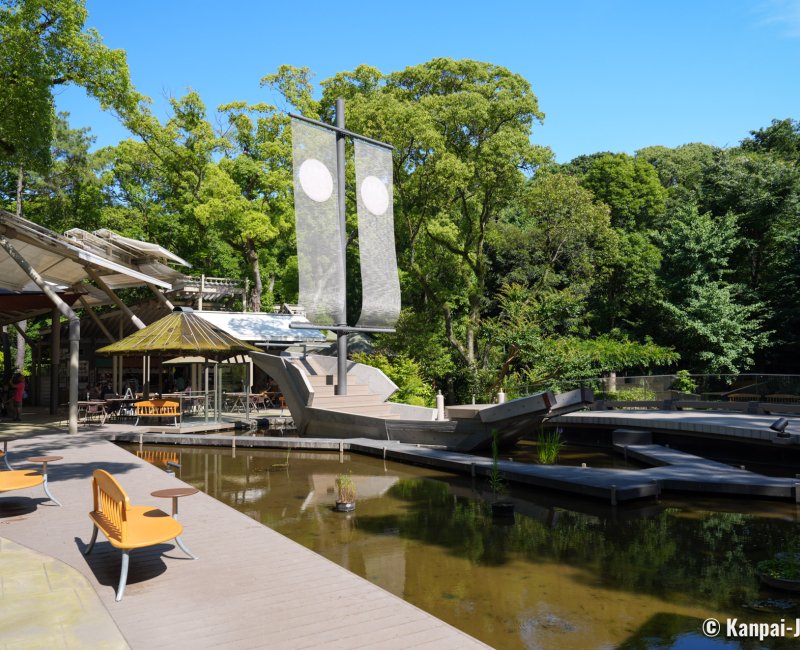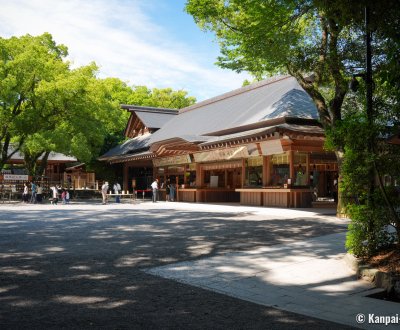Atsuta-jingu
The Great Sacred Shrine in Nagoya
Atsuta-jingu is a great Shinto shrine located in the south of Nagoya’s city center, in Aichi prefecture in Japan. The sacred grounds, nestled in a large thousand-year-old forest, is home to Kusanagi no Tsurugi, a sword said to be at the origins of the Japanese archipelago’s mythical foundation.
Atsuta-jingu is one of the 3 oldest and most important Shinto shrines in Japan, along with Ise Jingu and Izumo Taisha great shrines. Located southward close to Nagoya’s city-center, its huge pavilions are shrouded in a dense vegetation made of thousand-year-old trees, such as a giant camphor tree encircled by a shimenawa rope and is object of worship. The shrine is also called Atsuta-sama or just Miya.
The 1rst torii ⛩️ gate sets the tone of the sacred enclosure, with a solemn atmosphere marked by a rectilinear alley leading to the main esplanade. The configuration of the site reminds of Tokyo’s Meiji-jingu.
Destroyed in World War II aerial bombings, the shrine was rebuilt in 1955 in the traditional shinmei-zukuri architectural style, with a layout and monumental size of the buildings similar to Ise Jingu’s. It underwent its latest great renovation in 2009, providing visitors with recent naked wood pavilions enhanced by beautiful golden ornaments. Atsuta’s enclosure is also home to various historical remains, such as a piece of wall gifted by daimyo lord Oda Nobunaga (1534 - 1582).

While the place’s quietness is favorable to recollection, it is also a nice place in Nagoya to have a glimpse at a Shinto ceremony, such as a wedding or rituals related to crucial ages in the growth of children (Miyamairi for the newborns, or Shichigosan for children aged 3, 5 and 7 years old). On the weekend, you’ll meet Japanese families clad in their most beautiful kimonos, and on a week day people living in the neighborhood, salary-men and students who come to pray after work.
The green haven of the forest is protecting Atsuta no Okami, the main kami deity enshrined at Atsuta-jingu. It is associated with 5 other great Shinto kami, related to the mythical origins of the shrine’s foundation:
- Amaterasu no Okami;
- Susanoo no Okami;
- Yamato Takeru no Mikoto;
- Miyasuhime no Mikoto; and,
- Takeinadane no Mikoto.

Museum of the sword Kusanagi no Tsurugi
Founded in 113 under the reign of emperor Keiko (71 – 130), Atsuta-jingu is intimately connected to the myth of Keiko’s son, the prince Yamato Takeru no Mikoto. Yamato Takeru, whose story is told in the famous classical chronicles Kojiki and Nihon Shoki, is said to have spent some of his later days in the Owari province, nowadays the western part of Aichi prefecture. He married Miyasu-hime, the daughter of the governor of Owari. Before going and passing on the way in Mie prefecture, he bestowed her the famous sacred sword Kusanagi no Tsurugi, an artifact that was initially retrieved from the tail of 8-headed dragon Yamata no Orochi by kami Susanoo (Amaterasu’s brother).
The sword Kusanagi no Tsurugi became one of the 3 Sacred Treasures (Sanshu no jingi) constituting the imperial regalia of Japan, and has been enshrined in Atsuta-jingu ever since. This most precious relic for the Shinto cult can only be accessed by the imperial family and on rare occasions, the latest being Naruhito’s enthronement in 2019.
The Kusanagi-kan Museum opened to the public in June 2021 into the shrine’s grounds to explore the myth of the legendary sword. It displays several kinds of blades, various methods of forging, and, samples of volcanic rocks that were used to make those beautiful blades. The 2nd part of the exhibition is more interactive with a possibility to handle (with great care) unsheathed katana swords.

The architecture of this new gallery is also quite original, built to display maritime references: a boat-like walkway in the heart of the Japanese garden in front of the museum, and a roof looking like an inverted hull from the inside.
Another more conventional building, Atsuta-jingu’s Treasure Hall or Takaramono-kan, exhibits various historical items, especially of the Edo period (1603 - 1868) in connection to the history of the shrine. Explanations are only provided in Japanese, therefore this museum is mainly aiming at domestic visitors and those who are passionate about traditional Japanese culture.


